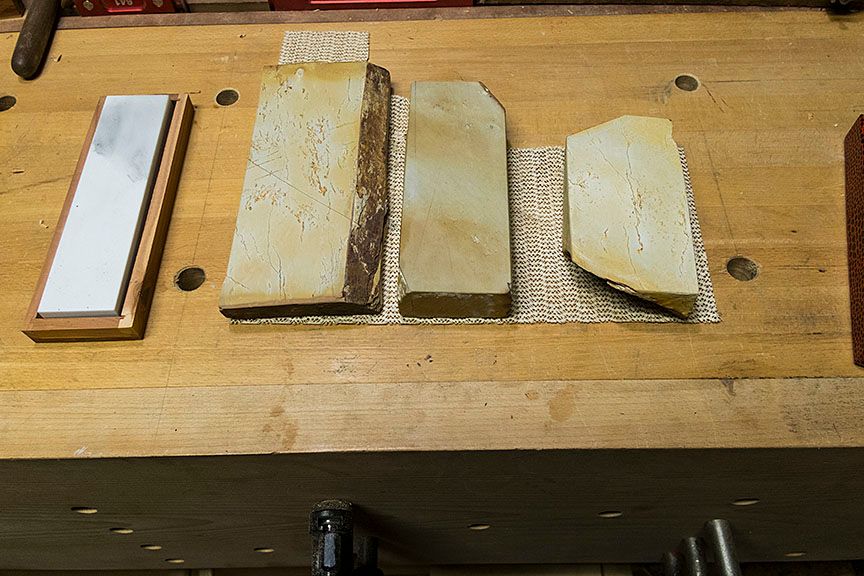
Originally Posted by
ken hatch

Brian,
So you like the smoke and peat, I've several Islay Whisky's in my rotation Including Lagavulin 16 but I've never tried Bunnahabhain 12, a must do. One of my favorite day to day Whisky's is Glenkinchie 12 it is more of a Highland Whisky but with a under taste of peat smoke.
What to me is strange, is MsBubba (should be MsMcBubba

), a native Scott, does not like Whisky but loves Tequila and what is even stranger her Tequila cost more than my 12 and 16 year olds. Go figure.
ken
Hah, that is interesting. Fine Tequila is a bit lost on me, I could try it next to something above average and probably not know the difference. Before you retire try Bunnahabhain 25, sure to change your life. If So hasn't quite ruined you with Jnats that will finish the job.

Originally Posted by
Warren Mickley

There is sort of a one dimensional theory of sharpening which suggests that we can judge the quality of the edge by the grit number of the last medium that worked it. The reality is much more complicated, but this numerical grit theory has led to some odd consequences. One is that it has placed a premium on stones which cut fast. If one 6000 stone cuts faster than another 6000 it must be superior, no matter what kind of surfaces or edge it leaves behind. Thus we have really sharp and harsh stones like Shaptons or diamonds that leave a battered surface instead of more gentle stones that leave a more refined edge for the same grit size.
Another consequence of this simplistic grit theory is that people have struggled to come up with some abrasive that is inherent in strop leather. They cannot accept that the plain leather is doing its job without some hard particles involved. One guy thinks the horses must have silica in their sweat, one guy thinks the horse must have embedded dust when it rolled on the ground, another thinks the tanning chemicals must be doing the job.
A better method of judging edges is to look at the wood surface that the tool leaves behind. At one time Shapton 16K or maybe 15K were widely used at hand tool events. What I noticed was that even freshly sharpened irons yielded a surface on the wood which was not as fine as that from a soft Arkansas stone. Does that mean the soft Arkansas is 20K or something? I think the answer is that the Arkansas is good at polishing, while the Shapton is good at removing material. It was designed to remove material, not to polish edges.
There is a place for stones that remove material in a reasonable amount of time, although too harsh a stone will leave a surface that is more difficult to polish. The Arkansas stones are good at smoothing scratch patterns and polishing. Trying to make them act like Shaptons or diamonds or Besters will diminish their capacity for polishing.
What was really eye opening to me when I began with Japanese natural stones (and my continuation into Arkansas stones) is how fine of an edge they leave at their respective 'grit'. I certainly agree that getting caught up in the numbers doesn't show anywhere near the real picture as it's been my experience that natural stones (of which a real grit number of 8000 is about as fine a grit as you can find in natural stones) often produce a much more refined edge than synthetics that are even considered much finer in terms of grit.
Last edited by Brian Holcombe; 07-30-2016 at 9:36 PM.
Bumbling forward into the unknown.




 Reply With Quote
Reply With Quote



 ), a native Scott, does not like Whisky but loves Tequila and what is even stranger her Tequila cost more than my 12 and 16 year olds. Go figure.
), a native Scott, does not like Whisky but loves Tequila and what is even stranger her Tequila cost more than my 12 and 16 year olds. Go figure. The Ohira is probably pretty close to my Yaginoshima in terms of finish.
The Ohira is probably pretty close to my Yaginoshima in terms of finish.
